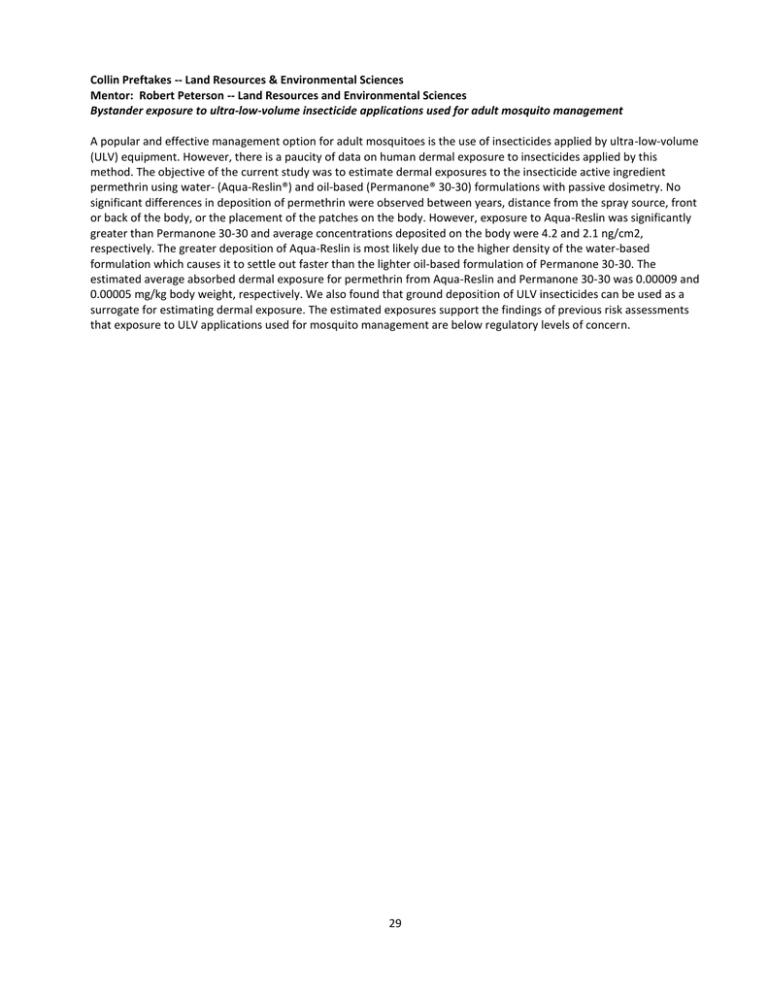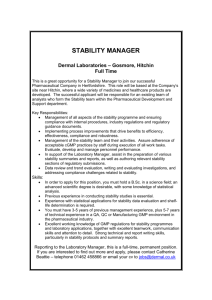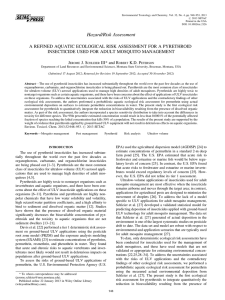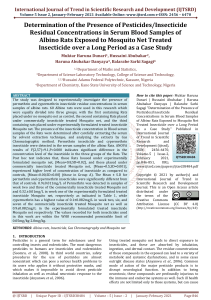Collin Preftakes -- Land Resources & Environmental Sciences
advertisement

Collin Preftakes -- Land Resources & Environmental Sciences Mentor: Robert Peterson -- Land Resources and Environmental Sciences Bystander exposure to ultra-low-volume insecticide applications used for adult mosquito management A popular and effective management option for adult mosquitoes is the use of insecticides applied by ultra-low-volume (ULV) equipment. However, there is a paucity of data on human dermal exposure to insecticides applied by this method. The objective of the current study was to estimate dermal exposures to the insecticide active ingredient permethrin using water- (Aqua-Reslin®) and oil-based (Permanone® 30-30) formulations with passive dosimetry. No significant differences in deposition of permethrin were observed between years, distance from the spray source, front or back of the body, or the placement of the patches on the body. However, exposure to Aqua-Reslin was significantly greater than Permanone 30-30 and average concentrations deposited on the body were 4.2 and 2.1 ng/cm2, respectively. The greater deposition of Aqua-Reslin is most likely due to the higher density of the water-based formulation which causes it to settle out faster than the lighter oil-based formulation of Permanone 30-30. The estimated average absorbed dermal exposure for permethrin from Aqua-Reslin and Permanone 30-30 was 0.00009 and 0.00005 mg/kg body weight, respectively. We also found that ground deposition of ULV insecticides can be used as a surrogate for estimating dermal exposure. The estimated exposures support the findings of previous risk assessments that exposure to ULV applications used for mosquito management are below regulatory levels of concern. 29











